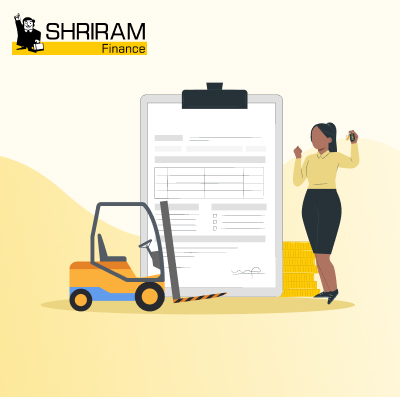Acquiring construction equipment like excavators, bulldozers, and cranes is capital-intensive. While such machinery is imperative for completing projects efficiently, commercial builders may lack the liquidity to make large equipment purchases upfront. This is where commercial builder equipment finance comes into play.
Financial institutions offer loans specifically tailored to fund construction equipment purchases. Read on to understand about the financing for commercial construction better.
How Does Commercial Builder Equipment Finance Work?
Construction equipment loans help commercial builders, contractors, and construction companies purchase necessary machinery like:
- Excavators: For digging trenches, holes, foundations etc. Different types suit various needs.
- Bulldozers: Essential for demolition work and land levelling, amongst other uses.
- Cranes: Important for hoisting and lifting jobs on sites.
- Concrete mixers: These are used to transport and mix concrete with different ingredients.
- Other niche machinery: Based on specific requirements like piling rigs, road rollers, graders etc.
Such financing helps builders maintain liquidity, manage cash flow, and continue operations without delays caused by upfront equipment costs. Commercial builder equipment finance can be crucial for businesses that need to scale up operations or replace ageing equipment.
Key Benefits of Commercial Builder Equipment Finance
A commercial builder equipment finance comes with several benefits, making the job of builders seamless. Some of those advantages have been discussed below:
1. Cost Efficiency and Cash Flow Management
The bulk of capital required to acquire machinery is covered, so builders use vendor credit judiciously and avoid overstepping budgetary limits. This makes expenditures easier to forecast and record. Daily operations and cash flows remain undisrupted while obtaining new equipment.
2. Project Continuity
Instant purchasing power enables quick equipment procurement without waiting to build up capital. This ensures site work runs smoothly. Delays waiting for special equipment can be eliminated, allowing faster project completion.
3. Capital Preservation
Leveraging debt prevents builders from exhausting cash reserves or selling other assets to fund purchases. Financing also lets you avoid equity dilution. Working capital stays protected to meet regular overheads and pay employees.
4. Tax Benefits and Savings
Construction companies can depreciate equipment values against taxable profits over time. The GST input tax credit becomes claimable on interest paid. Together, these factors lower tax outflow. Some concessional loan schemes also reduce the overall interest burden.
Commercial Builder Equipment Finance Eligibility Criteria
To qualify for a construction equipment loan for commercial builders, the following criteria are typically considered:
- Nature of Business: The applicant should be involved in the construction industry or a related field.
- Credit History: A good credit score demonstrates a history of responsible financial management.
- Age of the Business: Lenders may prefer businesses with a stable operational history, typically around 2-3 years.
- Annual Revenue: Financial institutions will review the applicant’s income to determine the loan amount they can afford.
Documents Needed:
- Identity and address proof (Aadhaar, Passport, or Driving Licence)
- Proof of income (bank statements or income tax returns)
- Details of the construction equipment being financed (invoice or proforma)
Note: Documents required may vary with the policies of the financial institution.
How to Choose the Right Loan Provider for Your Project
Selecting an appropriate financier for construction equipment funding entails:
- Checking interest rates and processing fees competitiveness.
- Understanding the type of lending methodology - term loan vs working capital funding.
- Reviewing additional charges like foreclosure and prepayment penalties.
- Assessing repayment flexibility in tune with project cash flows.
- Comparing loan disbursal timelines and levels of financing against equipment values.
- Verify post-disbursal assistance for insurance paperwork, claim processing, etc.
Opting for financiers with dedicated construction lending expertise aids faster approvals. Those with local branch networks also enable better ongoing servicing. Checking such factors guides the ideal choice.
Overcoming Commercial Builder Equipment Finance Challenges
Some key difficulties faced when borrowing for construction machinery purchases are:
Navigating High-Interest Rates
Base lending rates are higher than other retail loans due to sector risk profiles. But options exist to obtain cheaper rates. Limited collateral security or blended funding combining debt-equity partially counters higher interest costs. Concessional schemes also provide lower rate advantage.
Managing Cash Flow Issues During Repayment
If project delays arise, timely repayments are impacted. Hence, planning amortisation schedules aligned to collection cycles is essential. Opting for ballooning repayment models, where outflows are smaller initially, creates better matching.
Seeking moratoriums or requesting emergency credit lines also helps handle temporary mismatches. But contingencies like these should be budgeted for upfront.
Dealing with Collateral Requirements
Most construction equipment loans require collateral, often the purchased machinery. If a borrower defaults, the lender can seize the equipment. Builders should ensure they can comfortably meet repayment obligations to avoid losing their essential equipment.
The Bottom Line
While commercial construction requires heavy machinery investments, equipment financing overcomes such barriers. The multitude of cash flow, continuity, and cost benefits make loans invaluable for builders and contractors alike. Carefully selecting commercial builder equipment finance partners who provide ideal loan packages paves the path for seamless, sustainable growth.
































